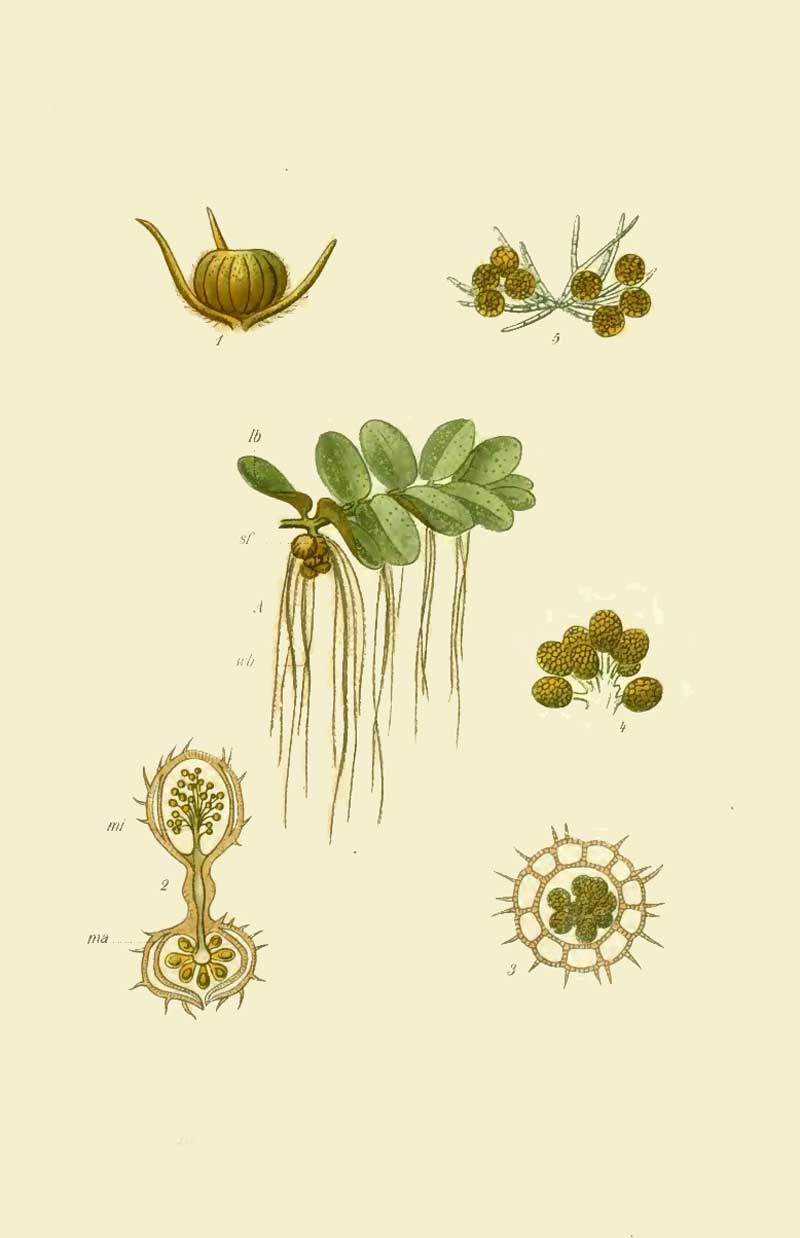
Superregnum: Eukaryota
Regnum: Plantae
Divisio: Tracheophyta
Divisio: Pteridophyta
Classis: Polypodiopsida
Ordo: Salviniales
Familia: Salviniaceae
Genus: Salvinia
Species: Salvinia natans
Name
Salvinia natans (L.) All.
References
Flora Pedemontana sive Enumeratio Methodica Stirpium Indigenarum Pedemontii 2:289. 1785
USDA, ARS, Germplasm Resources Information Network. Salvinia natans in the Germplasm Resources Information Network (GRIN), U.S. Department of Agriculture Agricultural Research Service. Accessed: 08-Apr-12.
Vernacular names
беларуская: Сальвінія плывучая
čeština: nepukalka vzplývající
Deutsch: Gemeiner Schwimmfarn
English: water fern / floating watermoss
suomi: Kellussaniainen, kellusaniainen
magyar: Vízi rucaöröm
한국어: 생이가래
Nederlands: kleine vlotvaren
polski: Salwinia pływająca
русский: Сальвиния плавающая
Salvinia natans (commonly known as floating fern,[3] floating watermoss,[4] floating moss, or commercially, water butterfly wings)[5] is an annual floating aquatic fern, which can appear superficially similar to moss. It is found throughout the world where there is plentiful standing fresh water, sunlight, and humid air, but is especially common in Africa, Asia, central Europe, and South America.[3] In New York State and Massachusetts, it is an introduced species.[4]
Characteristics
Salvinia natans has two nickel-sized leaves lying flat against the surface of the water, and a third submerged leaf which functions as a root. Flotation is made possible by pouches of air within the leaves. Cuticular papillae on the leaves' surface keep water from interfering with the leaves' functioning, and serve to protect them from decay. Spore cases form at the plant's base for reproduction.[3]
The leaves of S. natans block sunlight from reaching very far underwater. This is helpful to many freshwater fish, providing safe hiding places to breed in, but can interrupt the photosynthesis of many underwater plants. S. natans can eventually cover entire ponds or lakes without ecological competition, starving other plant species.[3]
Native distribution
Salvinia natans is widely distributed, being native to several continents. In Africa, S. natans is native to Algeria, Egypt, Libya, Morocco, and Tunisia. In Asia, the plant is native to Afghanistan, Azerbaijan, China, Cyprus, India, Indonesia, Iran, Iraq, Israel, Jordan, Kazakhstan, Lebanon, northwest Pakistan, the Russian Federation, Japan, Korea, Saudi Arabia, Syria, Taiwan, Thailand, Turkey, and Uzbekistan. In Europe, it is native to Belarus, Belgium, Bulgaria, Czech Republic, France, Germany, Hungary, Italy, Moldova, the Netherlands, Poland, Romania, the southern European portion of the Russian Federation, Slovakia, Spain, Ukraine, and the states within the former Yugoslavia.[2]
References
This species was first described and named in Flora Pedemontana 2. 289. 1785.; and in Bak. Hdb. 135. NPfl. 402. 1785 "Plant Name Details for Salvinia natans". IPNI. Retrieved May 9, 2011. "Distribution: Eur. centr.-China bor.-India."
"Salvinia natans". Germplasm Resources Information Network (GRIN). Agricultural Research Service (ARS), United States Department of Agriculture (USDA). Retrieved May 9, 2011.
Joyce McCauley (April 30, 2001). "Salvinia natans". Washington, Pennsylvanian: Washington and Jefferson College. Retrieved May 9, 2011.
"Profile for Salvinia natans (Floating fern)". PLANTS Database. USDA, NRCS. Retrieved May 9, 2011.
"Salvinia Natans". It's a Fishy Buziness. Retrieved May 9, 2011.
Retrieved from "http://en.wikipedia.org/"
All text is available under the terms of the GNU Free Documentation License

